Investigation of the Significance of Blood Signatures on Sepsis-Induced Acute Lung Injury in Sepsis Within 24 Hours
- PMID: 40421173
- PMCID: PMC12105892
- DOI: 10.1155/ijog/5684300
Investigation of the Significance of Blood Signatures on Sepsis-Induced Acute Lung Injury in Sepsis Within 24 Hours
Abstract
Background: Sepsis is an infection-induced dysregulated cellular response that leads to multiorgan dysfunction. As a time-sensitive condition, sepsis requires prompt diagnosis and standardized treatment. This study investigated the impact of biomarkers identified in peripheral whole blood from sepsis patients (24-h post-onset) on sepsis-induced acute lung injury (ALI) using bioinformatics and machine learning approaches. Methods: Gene Expression Omnibus (GEO) datasets were analyzed for functional and differential gene expression. Critical genetic markers were identified and evaluated using multiple machine learning algorithms. Single-cell RNA sequencing (scRNA-seq) and cell-type identification by estimating relative subsets of RNA transcript (CIBERSORT) were conducted to explore associations between biomarkers and immune cells. Biomarker expression was further validated through animal experiments. Result: A total of 611 overlapping differentially expressed genes (DEGs) were identified in GSE54514, including 361 upregulated and 250 downregulated genes. From GSE95233, 1150 DEGs were detected, with 703 upregulated and 447 downregulated genes. Enrichment analysis revealed DEGs associated with immune cell activity, immune cell activation, and inflammatory signaling pathways. Component 3a receptor 1 (C3AR1) and secretory leukocyte peptidase inhibitor (SLPI) were identified as critical biomarkers through multiple machine learning approaches. CIBERSORT analysis revealed significant associations between immune cell types and C3AR1/SLPI. Moreover, the scRNA-seq analysis demonstrated that the SLPI expression was significantly elevated in immunological organ cells during the early stages of sepsis, a finding further validated in sepsis-induced ALI models. Conclusion: This study employed machine learning techniques to identify sepsis-associated genes and confirmed the importance of SLPI as a biomarker within 24 h of sepsis onset. SLPI also played a significant role in sepsis-induced ALI, suggesting its potential as a novel target for personalized medical interventions, targeted prevention, and patient screening.
Keywords: ALI; SLPI; machine-learning strategy; sepsis.
Copyright © 2025 Zaojun Fang et al. International Journal of Genomics published by John Wiley & Sons Ltd.
Conflict of interest statement
The authors declare no conflicts of interest.
Figures

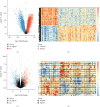
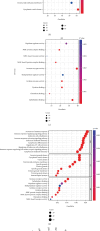
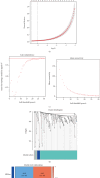

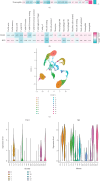
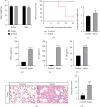
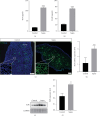
Similar articles
-
Identifying potential signatures for atherosclerosis in the context of predictive, preventive, and personalized medicine using integrative bioinformatics approaches and machine-learning strategies.EPMA J. 2022 Jul 20;13(3):433-449. doi: 10.1007/s13167-022-00289-y. eCollection 2022 Sep. EPMA J. 2022. PMID: 36061826 Free PMC article.
-
[Secretory leukocyte peptidase inhibitor inhibits the inflammatory response and apoptosis of lipopolysaccharide-induced human proximal renal tubular cells].Zhonghua Wei Zhong Bing Ji Jiu Yi Xue. 2022 Jul;34(7):724-726. doi: 10.3760/cma.j.cn121430-20210903-01315. Zhonghua Wei Zhong Bing Ji Jiu Yi Xue. 2022. PMID: 36100410 Chinese.
-
Identification of Key Inflammation-related Genes as Potential Diagnostic Biomarkers of Sepsis.Altern Ther Health Med. 2023 Jul;29(5):24-31. Altern Ther Health Med. 2023. PMID: 37235492
-
Analysis and validation of diagnostic biomarkers and immune cell infiltration characteristics in pediatric sepsis by integrating bioinformatics and machine learning.World J Pediatr. 2023 Nov;19(11):1094-1103. doi: 10.1007/s12519-023-00717-7. Epub 2023 Apr 28. World J Pediatr. 2023. PMID: 37115484 Free PMC article.
-
Deciphering the role of pyroptosis-related genes and natural killer T cells in sepsis pathogenesis: a comprehensive bioinformatics and Mendelian randomization analysis.J Physiol Pharmacol. 2025 Apr;76(2). doi: 10.26402/jpp.2025.2.10. Epub 2025 May 5. J Physiol Pharmacol. 2025. PMID: 40350654
References
LinkOut - more resources
Full Text Sources
Research Materials
Miscellaneous

